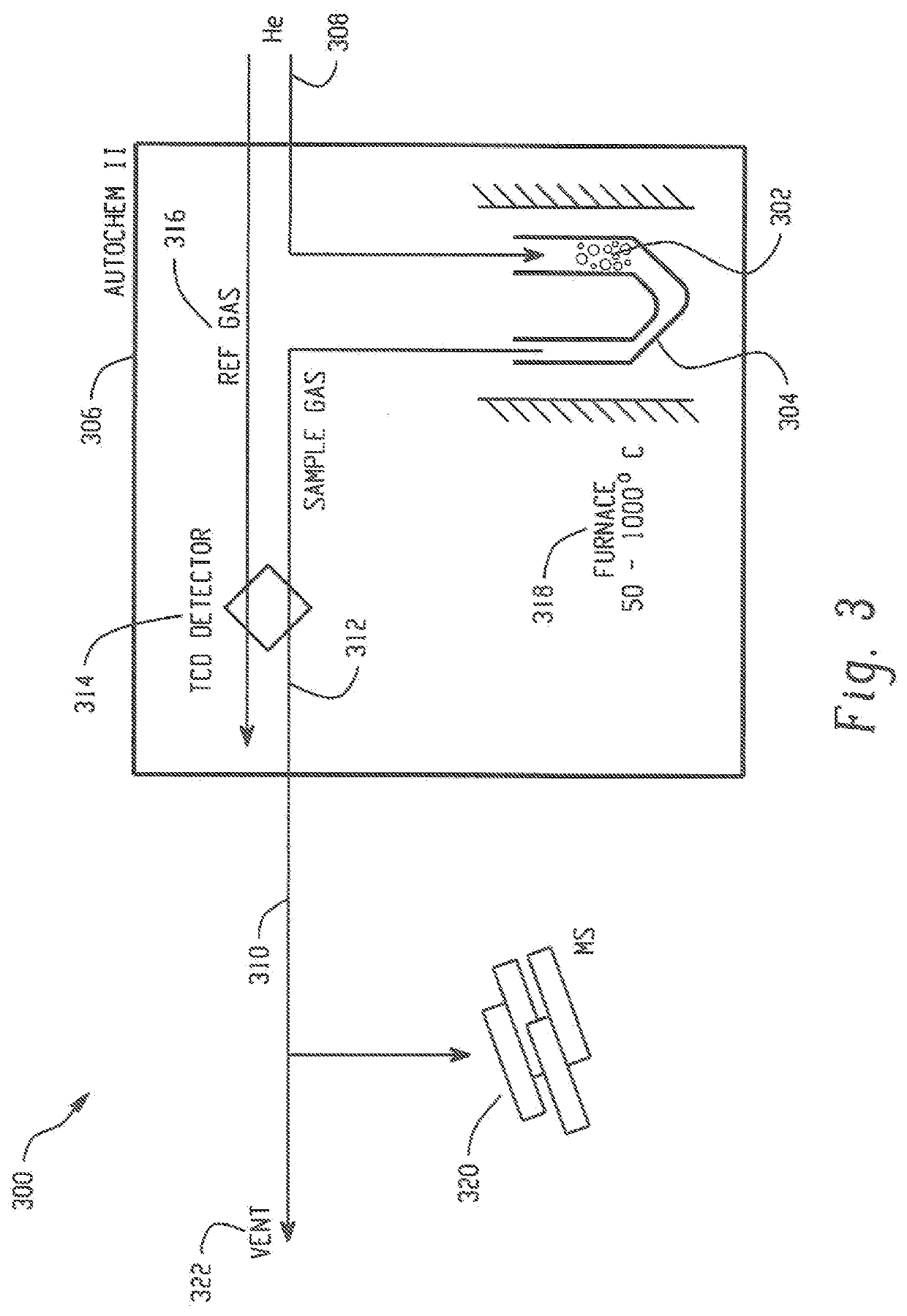Quantification of surface acidity on a low surface area material
- Summary
- Abstract
- Description
- Claims
- Application Information
AI Technical Summary
Benefits of technology
Problems solved by technology
Method used
Image
Examples
example
[0094]Example 1: A method and system of surface acidity quantification on a low surface area sample according to an embodiment described herein were used to characterize the surface acidity of an example having a low surface area to mass ratio.
[0095]FIG. 3 shows a diagram 300 of an experimental setup for the method and system of surface acidity quantification on a low surface area according the example 1. A sample alumina catalyst carrier 302 was provided for this process. The low surface area alumina catalyst carrier 302 had a surface area to mass ratio of 0.77 m2 / g and a weight of 5.7 g. The total surface area of the alumina catalyst carrier 302 was 4.40 m2. The alumina sample 302 was crushed and loaded into a quartz reactor 304. The quartz reactor was situated in the furnace of a fully automated chemisorption analyzer 306. In this experiment, an Autochem II 2920 by Micromeritics was used as the chemisorption analyzer 306. The chemisorption analyzer 306 can perform temperature-pro...
PUM
 Login to View More
Login to View More Abstract
Description
Claims
Application Information
 Login to View More
Login to View More - R&D
- Intellectual Property
- Life Sciences
- Materials
- Tech Scout
- Unparalleled Data Quality
- Higher Quality Content
- 60% Fewer Hallucinations
Browse by: Latest US Patents, China's latest patents, Technical Efficacy Thesaurus, Application Domain, Technology Topic, Popular Technical Reports.
© 2025 PatSnap. All rights reserved.Legal|Privacy policy|Modern Slavery Act Transparency Statement|Sitemap|About US| Contact US: help@patsnap.com



